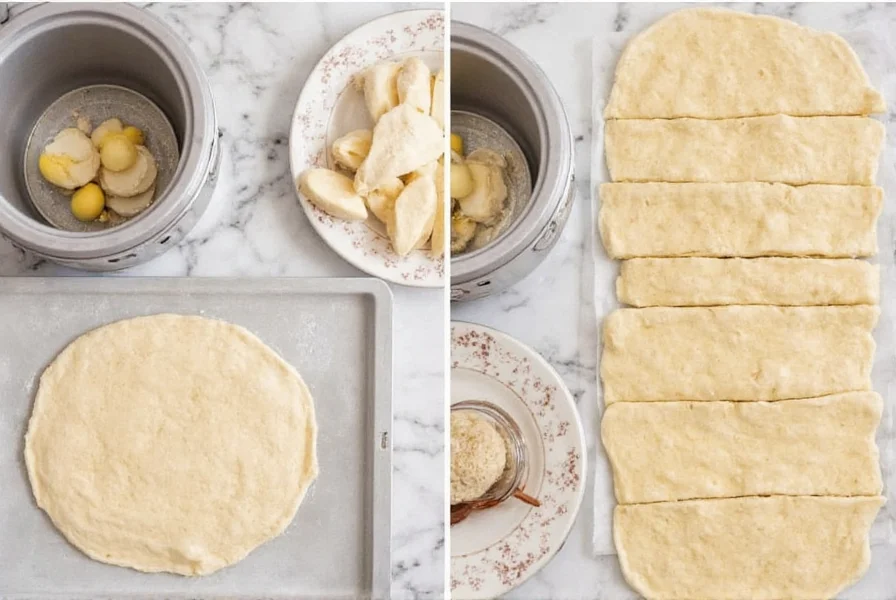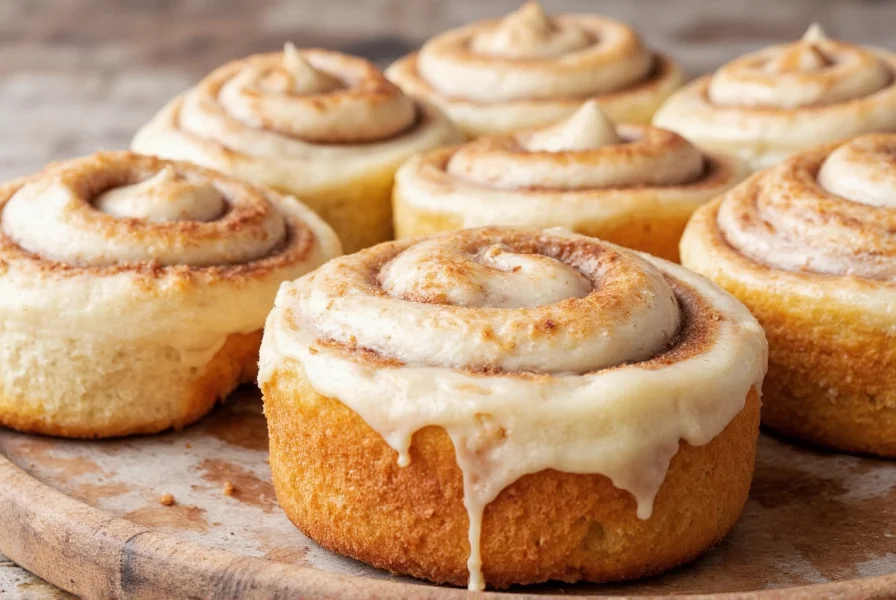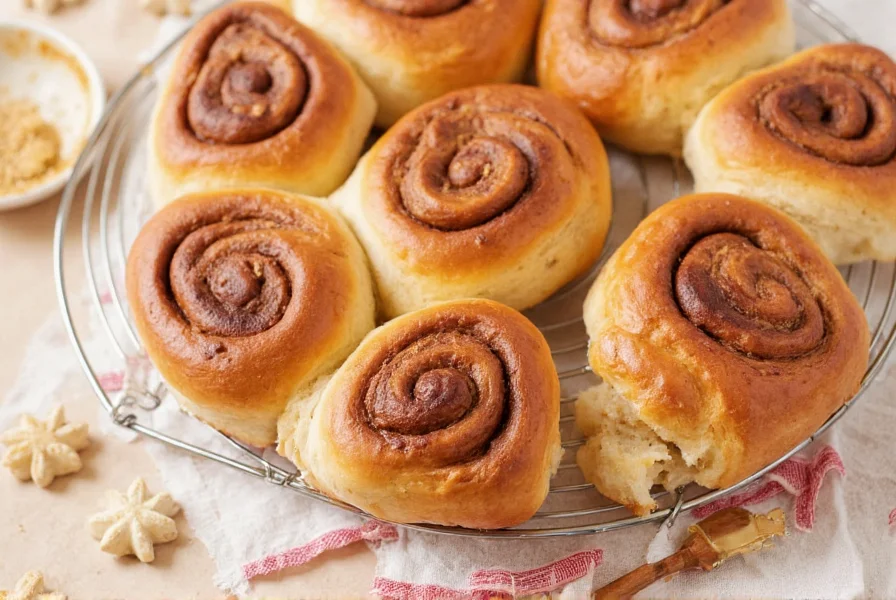Yes, you can absolutely make delicious cinnamon buns in a bread machine. The key is using the right dough cycle for rising, then shaping and baking the buns traditionally. Bread machines excel at mixing and kneading the dough, but cinnamon buns require manual shaping and conventional oven baking for the best results. This guide provides a complete recipe, settings recommendations, and troubleshooting tips for perfect homemade cinnamon buns using your bread machine.
Making cinnamon buns in a bread machine combines the convenience of automated dough preparation with the authentic texture and flavor of homemade pastries. While bread machines can't fully bake filled pastries due to their cylindrical shape, they're exceptional for creating the perfect dough foundation. This comprehensive guide walks you through the entire process, from selecting ingredients to achieving that signature swirl and gooey center.
Essential Ingredients for Bread Machine Cinnamon Buns
The quality of your ingredients directly impacts the final product. For the best bread machine cinnamon roll dough recipe, use these proportions for a standard 1.5-pound loaf setting:
| Ingredient | Measurement | Notes |
|---|---|---|
| All-purpose flour | 3 cups (360g) | Measure with spoon-and-level method |
| Warm milk | 1/2 cup (120ml) | 110°F/43°C - crucial for yeast activation |
| Unsalted butter | 1/4 cup (56g) | Melted and cooled slightly |
| Granulated sugar | 1/4 cup (50g) | Plus 1/2 cup for filling |
| Active dry yeast | 2 1/4 teaspoons | 1 standard packet |
| Egg | 1 large | Room temperature |
| Salt | 1 teaspoon | Enhances flavor development |
Optimal Bread Machine Settings for Cinnamon Bun Dough
Using the correct cycle is critical for the best bread machine cinnamon roll recipe. Follow these settings:
- Cycle: Dough setting (typically 1:30-2:15 duration)
- Crust color: Not applicable for dough cycle
- Loaf size: Match to your machine's capacity (usually 1.5 lb)
- Add-ins: Program machine to add mix-ins after first kneading cycle
Place wet ingredients first, then dry ingredients, with yeast in the designated dispenser or in a small well in the flour. The machine should complete mixing and kneading, then allow the dough to rise fully before beeping.

Step-by-Step Instructions for Perfect Results
Follow this detailed process for the easiest bread machine cinnamon buns that deliver professional results:
- Dough preparation: Add ingredients to bread machine pan in proper order and start dough cycle
- First rise: Allow machine to complete full dough cycle (mixing, kneading, rising)
- Prepare filling: While dough rises, mix 1/2 cup sugar with 2 tablespoons cinnamon and 1/4 cup melted butter
- Roll out dough: Turn risen dough onto floured surface and roll into 16x12 inch rectangle
- Apply filling: Brush surface with melted butter, then sprinkle cinnamon-sugar mixture evenly
- Roll and cut: Tightly roll dough from long side, pinch seam, and cut into 12 equal pieces
- Second rise: Place in greased baking dish, cover, and let rise 30-45 minutes
- Bake: 350°F (175°C) for 20-25 minutes until golden brown
- Frost: Apply cream cheese frosting while still warm
Troubleshooting Common Bread Machine Cinnamon Roll Issues
Even with the best bread machine cinnamon roll recipe, problems can occur. Here's how to fix them:
Dense or Tough Buns
Cause: Too much flour or insufficient rising time
Solution: Measure flour accurately using spoon-and-level method, ensure dough doubles in size during both rises, and don't skip the second rise after shaping.
Filling Leaking Out
Cause: Overfilling or rolling too loosely
Solution: Use recommended filling amounts, roll dough tightly from the long edge, and pinch the seam securely before cutting.
Dough Not Rising Properly
Cause: Old yeast, incorrect liquid temperature, or cold environment
Solution: Test yeast viability, maintain liquid temperatures between 105-115°F (40-46°C), and place dough in warm spot for rising if your machine doesn't provide adequate warmth.

Delicious Variations to Try
Once you've mastered the homemade cinnamon buns bread machine basics, experiment with these popular variations:
- Nutty version: Add 1/2 cup chopped pecans or walnuts to the filling
- Fruity twist: Sprinkle 1/4 cup raisins or dried cranberries over the filling
- Maple delight: Replace granulated sugar with brown sugar and add 2 tablespoons maple syrup to filling
- Cream cheese swirl: Mix 4 oz softened cream cheese with 1/4 cup sugar for a marbled effect
Storage and Serving Recommendations
For optimal freshness of your bread machine cinnamon roll creations:
- Store unfrosted buns in airtight container at room temperature for up to 2 days
- Refrigerate frosted buns and consume within 3 days
- Freeze unfrosted rolls for up to 3 months - thaw and bake when needed
- Reheat individual buns in microwave for 10-15 seconds for fresh-from-oven texture
- Serve warm with coffee or as part of a brunch spread with fresh fruit
Frequently Asked Questions
Can I bake cinnamon buns completely in the bread machine?
No, bread machines aren't designed to bake filled pastries. The cylindrical shape prevents proper rising and browning of cinnamon buns. Use your machine for dough preparation only, then shape, proof, and bake in a conventional oven for the best results.
What's the ideal bread machine setting for cinnamon roll dough?
Use the "Dough" setting, which typically runs for 1.5-2 hours and includes mixing, kneading, and one full rising cycle. Avoid the "Bake" setting as it will cook the dough rather than preparing it for shaping into cinnamon buns.
Why did my bread machine cinnamon rolls come out flat?
Flat cinnamon buns usually result from over-rising (dough collapses when shaped), too much sugar in the dough inhibiting yeast activity, or insufficient gluten development. Ensure you're using fresh yeast, measuring ingredients accurately, and not letting the dough rise beyond double its original size.
Can I prepare bread machine cinnamon bun dough overnight?
Yes, you can use the delayed start feature to have dough ready in the morning, or after the dough cycle completes, refrigerate it for up to 24 hours. Cold fermentation develops better flavor, but allow the chilled dough to come to room temperature before rolling and shaping.
How do I prevent the filling from leaking during baking?
To prevent filling leakage, don't overfill, roll the dough tightly from the long edge, pinch the seam securely, and use a sharp serrated knife to cut the rolls. Placing a small piece of bread dough at the bottom of each roll before baking can also create a barrier that contains the filling.











 浙公网安备
33010002000092号
浙公网安备
33010002000092号 浙B2-20120091-4
浙B2-20120091-4